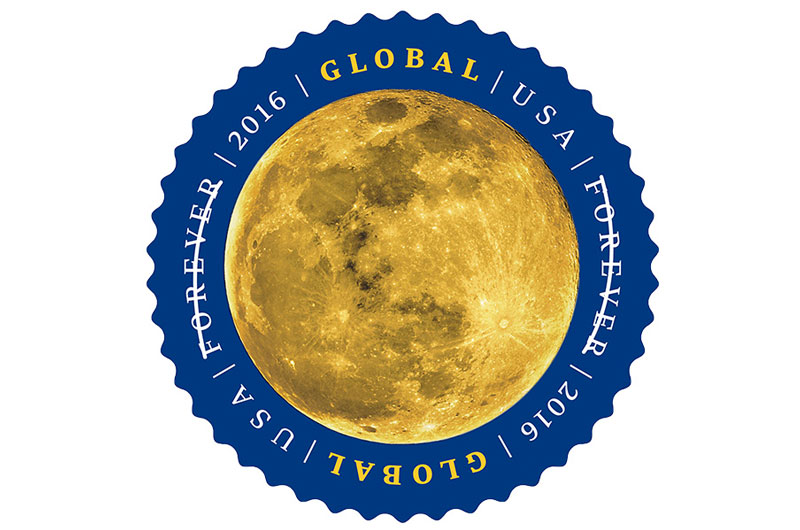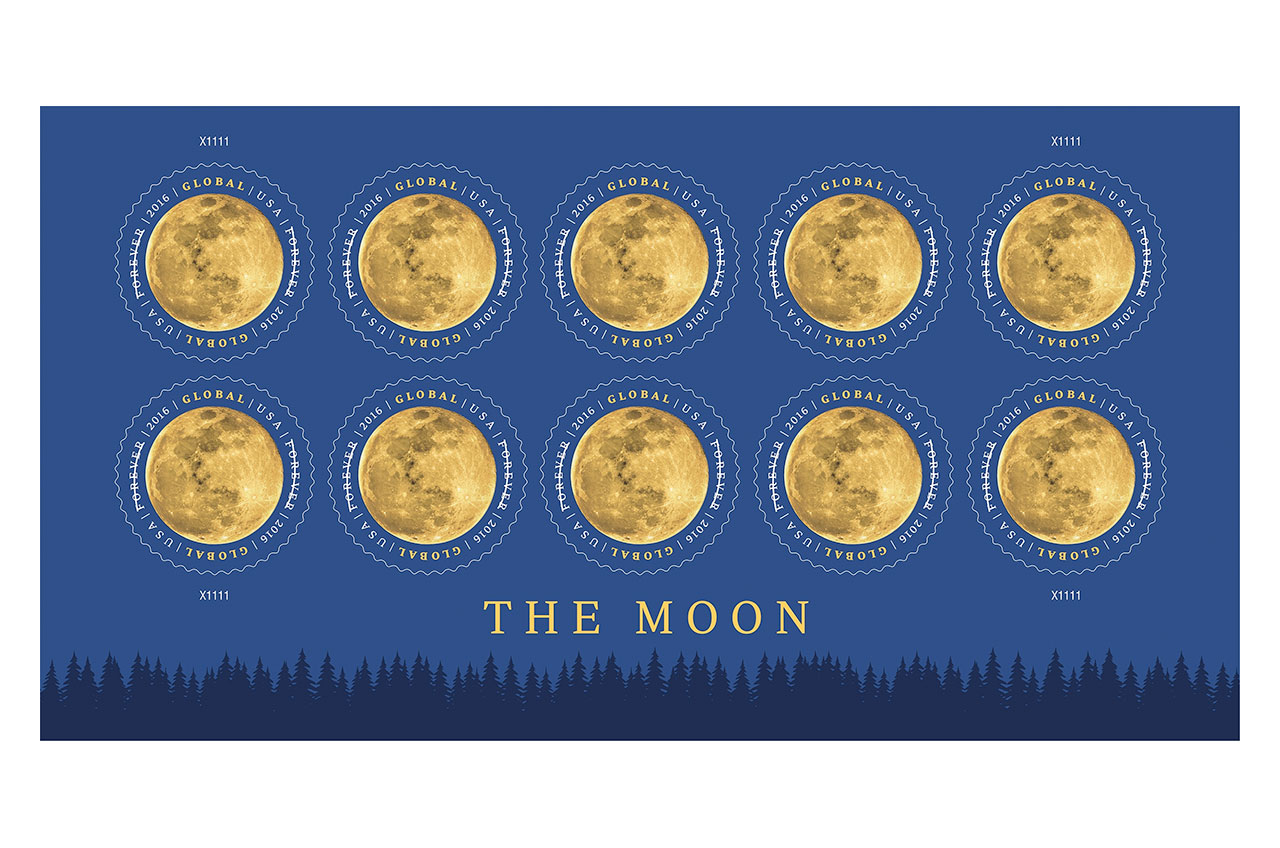Moon Mail: Earth's Moon Rises on New US Postage Stamp

You can now use the moon to send mail around the Earth.
The U.S. Postal Service on Monday (Feb. 22) began sales of "The Moon," a new postage stamp that can be used to mail a one-ounce letter to any country to which First-Class Mail International service is available.
"'The Moon' features a detailed photo of the full moon," the U.S. Postal Service (USPS) wrote in a press release. "The image captures the brilliant surface of Earth's only natural satellite."
Sold in sheets of ten identical, pressure-sensitive adhesive stamps, "The Moon" at its issue has a $1.20 value. As with all Global Forever stamps though, "The Moon" will retain a postage value equivalent to whatever the price of a single-piece one-ounce first-class mail international letter is at the time of its use, regardless if the rate should increase. [Photos: Space Age Postage Stamps Through History]
The timeless (of Forever) value of "The Moon" echoes why the USPS chose to feature the celestial body on a stamp.
"As Earth's only natural satellite, the moon has long had considerable impact on mankind," the postal service wrote in its description of the stamp. "Its gravitational pull creates ocean tides and affects our planet's motions."
The lunar phases have also had important social, spiritual, and mythological influences on various peoples throughout history, the USPS said.
Get the Space.com Newsletter
Breaking space news, the latest updates on rocket launches, skywatching events and more!
Since the moon's rotation and orbit periods are the same, the same near side always faces Earth. When the moon is opposite the sun in respect to its orbit around the Earth, its face appears illuminated, a phase called a full moon.
"Full moons provide fascination for many cultures and are the subject of a variety of folktales," the USPS wrote. "Due to the regularity of full moons ... several of them even have names and cultural characteristics associated with them."
Whether by coincidence or intention, February's full moon, called the "Snow Moon," coincided with the stamp's issue.
The stamp sheet's selvage features a tree line silhouetted against the night sky, which creates the appearance of the full moon stamps rising above the horizon.
"The Moon" is the first of several new space-topic stamps that the USPS plans to release in 2016. Two sets, "View of Our Planets" and "Pluto—Explored!", depicting the planets in our solar system and NASA's New Horizons spacecraft, are scheduled for issue at the World Stamp Show in New York City between May 28 and June 4.
Past U.S. stamps have also focused on the Earth's moon. A 1991 "Space Exploration" set of 10 stamps included one for the moon and multiple stamps have been released over the past four decades to celebrate the moon landings.

First issued in January 2013, the previous Global Forever round stamps have featured images of the Earth based on data collected by satellites.
"The Moon" Global Forever stamp is available at local post offices and through the USPS online store. For collectors, the postal service is also offering limited press sheets with die-cuts, a digital color postmark keepsake and a first day cover.
The public can also request first-day-of-issue cancellations by affixing "The Moon" stamp to an envelope addressed to themselves or others and mailing it in a larger envelope to:
After applying the first-day postmark, the USPS will return the envelopes through the mail. There is no charge for the postmark, up to a quantity of 50. There is a 5-cent charge for each additional postmark over 50. All requests for the postmark must be made by April 22, 2016.
See some of the previous U.S. postage stamps that featured the moon at collectSPACE.
Follow collectSPACE.com on Facebook and on Twitter at @collectSPACE. Copyright 2016 collectSPACE.com. All rights reserved.
Join our Space Forums to keep talking space on the latest missions, night sky and more! And if you have a news tip, correction or comment, let us know at: community@space.com.

Robert Pearlman is a space historian, journalist and the founder and editor of collectSPACE.com, a daily news publication and community devoted to space history with a particular focus on how and where space exploration intersects with pop culture. Pearlman is also a contributing writer for Space.com and co-author of "Space Stations: The Art, Science, and Reality of Working in Space” published by Smithsonian Books in 2018.In 2009, he was inducted into the U.S. Space Camp Hall of Fame in Huntsville, Alabama. In 2021, he was honored by the American Astronautical Society with the Ordway Award for Sustained Excellence in Spaceflight History. In 2023, the National Space Club Florida Committee recognized Pearlman with the Kolcum News and Communications Award for excellence in telling the space story along the Space Coast and throughout the world.










